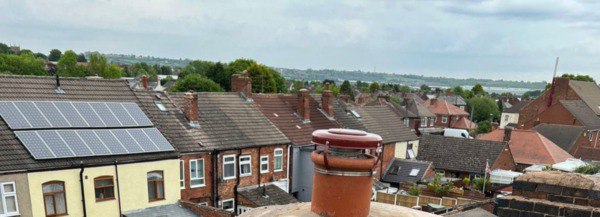Weathering the Storm: Addressing Severe Damage in Commercial Roofing Systems
Introduction: Commercial roofing systems are designed to withstand the elements, providing protection and shelter for businesses, employees, and assets. However, severe storms, including hurricanes, tornadoes, and heavy rainfall, can put commercial roofs to the test, causing extensive damage and posing safety risks to occupants. In this guide, we’ll explore strategies for addressing severe storm damage in commercial roofing systems, helping building owners and facility managers navigate the challenges and restore the integrity of their roofs efficiently and effectively.
Assessing the Damage:
- After a severe storm event, the first step in addressing damage to a commercial roofing system is to assess the extent and nature of the damage thoroughly. Engage qualified roofing professionals to inspect the roof and identify areas of concern, including missing or damaged shingles, flashing membranes, and structural components. Documenting the damage with photographs and detailed notes provides valuable information for insurance claims and repair planning.
Prioritising Safety:
- Safety should always be the top priority when addressing storm damage in commercial roofing systems. Before conducting any repairs or inspections, ensure the area is safe and free from loose debris, electrical hazards, and unstable structures. Implement safety measures, including fall protection equipment, barricades, and warning signs, to protect workers and occupants from accidents or injuries.
Temporary Repairs:
- In severe storm damage, temporary repairs may be necessary when immediate action is required to prevent further water intrusion and structural deterioration. Temporary measures such as tarping damaged areas, sealing leaks with waterproof tape or sealant, and securing loose materials help mitigate immediate risks and provide temporary protection until permanent repairs can be completed.
Comprehensive Repairs:
- Once the immediate safety concerns have been addressed, it’s essential to plan and execute comprehensive repairs to restore the integrity and functionality of the commercial roofing system. Engage experienced roofing contractors who specialise in storm damage repair to assess the damage, develop a repair plan, and execute the necessary repairs efficiently and effectively. Depending on the extent of the damage, repairs may involve replacing damaged roofing materials, repairing or reinforcing structural components, and restoring waterproofing integrity.
Insurance Claims:
- Navigating insurance claims for storm damage can be complex, requiring careful documentation, communication, and negotiation with insurance providers. Work with a knowledgeable roofing contractor who can assist with the insurance claims process, including documenting the damage, preparing accurate estimates, and advocating on behalf of the property owner to ensure fair and timely claim settlement. Promptly reporting storm damage to insurance providers and providing detailed documentation can expedite the claims process and facilitate timely repairs.
Preventive Measures:
- In addition to addressing immediate storm damage, it’s important to implement preventive measures to protect commercial roofing systems from future storm events. Regular roof inspections, maintenance, and proactive repairs help identify and address potential vulnerabilities before they escalate into major issues. Consider reinforcing roof structures, upgrading roofing materials, and installing additional storm-resistant features such as impact-resistant shingles, wind-rated fasteners, and stormwater management systems to enhance resilience and minimise future damage risks.
Conclusion: Severe storm damage can pose significant challenges for commercial roofing systems, threatening the safety, integrity, and functionality of buildings and assets. By promptly assessing the damage, prioritising safety, implementing temporary and comprehensive repairs, navigating insurance claims effectively, and implementing preventive measures, building owners and facility managers can address storm damage promptly and minimise disruption to operations. Investing in proactive storm damage mitigation strategies helps protect commercial roofing systems from future storms and ensures the long-term durability and performance of the building envelope.
Call us on: 01302 496 292
Click here to find out more about KAM Roofing Askern
Click here to complete our contact form and see how we can help with your roofing needs.

